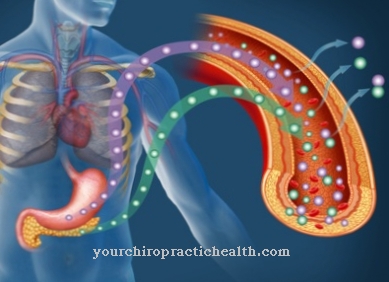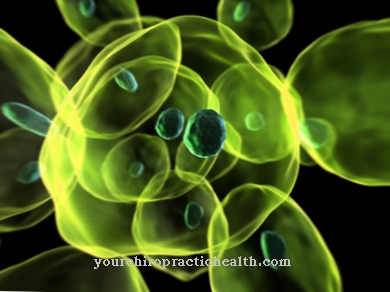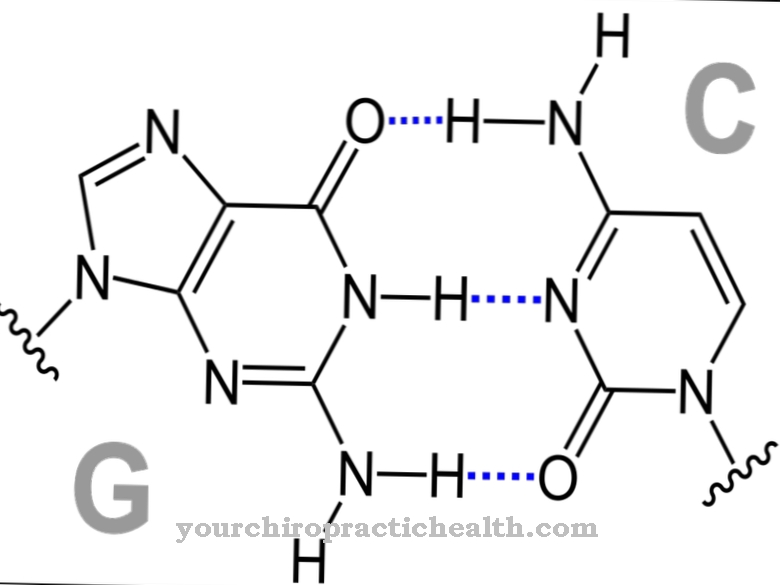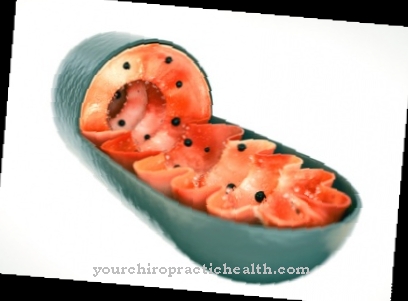The Ingression or immigration is a cell movement of gastrulation and thus constitutes an embryonic development step. Cells of the prospective endoderm, i.e. those of the outer cotyledon, migrate into the blastula. Errors in cell movements in the early development of the cotyledons lead, in most cases, to a miscarriage.
What is the ingression?

Gastrulation is a phase of embryogenesis. In humans, the phase involves the invagination of the blastocyst and the formation of three cotyledons. In principle, the gastrulation of all four-cell cells follows the same basic principles, but can differ slightly depending on the species.
Several cell movements characterize gastrulation. In addition to intussusception, involution, delamination and epibolism, ingression is a crucial process for the formation of the germ layers and thus for early embryonic development.
Ingression is also known as immigration. During cell movement, cells of the future endoderm migrate into the blastula, in order to then be pinched off into the blastocoel as part of the delamination. The cell movements of gastrulation have not yet been conclusively researched.
Function & task
During gastrulation, the blastocyst develops into a two-layer structure made up of an inner and an outer cotyledon. These cotyledons are known as the endoderm and ectoderm. The first cell division processes turn the omnipotent tissue of the blastocyst into ever more specific cell aggregations, from which the individual organs and tissues of the embryo are ultimately formed.
Through processes of migration and displacement, the so-called mesoderm is pushed between the endoderm and the ectoderm. This results in three cotyledons that contain organ-specific tissue for the development of the individual body structures.
The first gastrulation process is characterized by the cell movement of intussusception. The future endoderm invades into the blastocoel of the blastula. This is followed by the cell movement of the involution, in which the future endoderm curls up. So-called ingression or immigration follows these processes.
With this cell movement, cells of the endoderm migrate. The cells change their position or relative position. The focus is on the mesenchymal cells of the embryo. In EMT (epithelial-mesenchymal transition), the primary mesenchymal cells detach from the epithelium and become mesenchymal cells that can freely migrate.
The mechanism of ingression has not yet been fully understood. Studies exist, for example, on the sea urchin. According to the studies, three different processes take place in order to enable the ingression of a cell: The primary mesenchymal cells of the epithelium change their affinity for the neighboring epithelial cells that remain in the primitive stripe. In addition, the cells evidently change their affinity for the hyaline layer opposite their apical side during the ingression. The cells are constricted on the apical side, whereupon they change their inner-cellular structure by drastically restructuring the cytoskeleton. Then the motility of the cells changes. It also increases the affinity for the basal lamina that lines the blastocoel. The immigration of the cells into the blastocoel is the final goal.
The adhesion properties of the cells have now been characterized. While a future primary mesenchymal cell loses its affinity for the hyaline layer, its affinity for the basal substrate increases.
How the cells penetrate the basement membrane during the ingression has not yet been clarified. The basement membrane is a loose matrix, so that the cells presumably squeeze through the matrix. It has been speculated that the cells could also use a proteinase. Numerous transcription factors are activated during ingression, especially β-catenin and the growth factor receptor VEGFR. Penetration is probably made easier for the individual cells because their neighboring cells go through the ingression at the same time.
The ingression is followed by delamination, in which the cells of the blastula constrict the cells of the endoderm into the blastocoel.
Illnesses & ailments
Embryonic development disorders can be triggered by internal factors and external factors such as pollutants. Such a mistake will not be noticed by the pregnant woman in the first few days after fertilization of an egg cell. Often there is an unnoticed miscarriage shortly after fertilization. In this scenario, the egg does not even implant. The person concerned does not experience symptoms.
This changes from the beginning of the third week of development. From this point on, the unborn child is susceptible to external pollutants. Especially in the development of the three cotyledons, pollutants such as chemical or organic noxae can cause numerous errors that can have serious consequences. Errors in cell migration such as ingression can, for example, lead to an abnormal amount of cells being available for the individual cotyledons.
β-catenin plays an essential role in the ingression and its trouble-free process. If β-catenin is blocked in its function by harmful influences or internal processes, a pathological result is shown for cell migration. In this case, the cotyledons cannot develop any further. A miscarriage is the result.
Disturbances also occur when there is an oversupply of β-catenin. In this case, too many cells go through the cell migration of the ingression. An oversupply of cells of the prospective ectoderm is thus available during the delamination. Depending on the amount of oversupply, the pregnancy can determine or further progress and lead to embryonic malformations.
Dysfunction and formation of the growth factor receptor VEGFR can also be responsible for ingressive disorders.













.jpg)

.jpg)
.jpg)











.jpg)